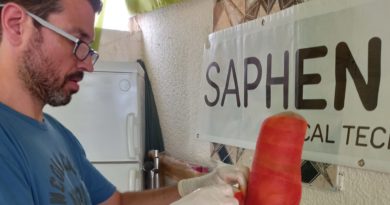Sensory Feedback – the holy grail in prosthetics

As the CEO of a company, that has introduced precisely this sensory feedback into prosthetics, it is easy to make a claim like „holy grail“. However, the statement does not originate from us. Rather from three renowned researchers in the field of prosthetics, Diane Atkins, Kyle Eberlin or Alexander Gardetto. They have spent decades studying proprioception and sensory-motor control loops in amputees. And they know that the addition of peripheral sensitivity can be one of the core components of bionic prosthetics. Being able to feel their prosthesis again is a wish shared by many people who have lost a limb. Saphenus achieves this through regular sensory feedback. Like a sensory bypass, the user receives back the information from the periphery that was taken away from them by the amputation. The sensorimotor control loop is restored. Balance returns, as does the sense of equilibrium in the peripheral limbs, including the artificial ones. Walking becomes natural again. No longer having to think about walking.
These are astonishing effects that can be achieved again with a comparatively simple principle. And if, after this ‘reset’ of the brain, the phantom pain can also be suppressed, then bionics has done everything it can. The somatosensory cortex can return to the original constellation of the limbs.
From this perspective, we are proud to have brought this hidden Holy Grail to light to some extent. That may also have been the reason for my decision 2016 to use the name saphenus for the company: saphenus from Arabic meaning ‘the hidden’.



